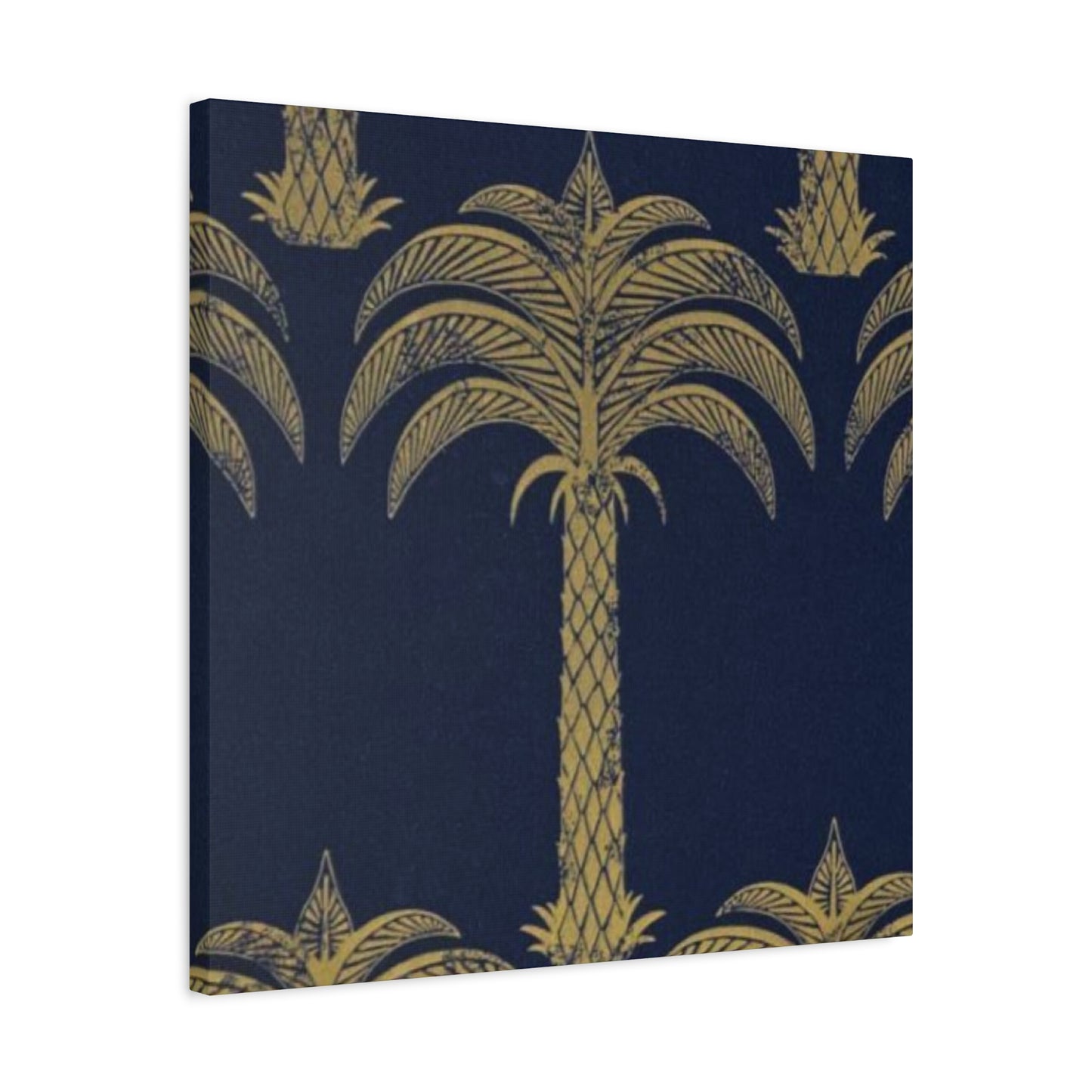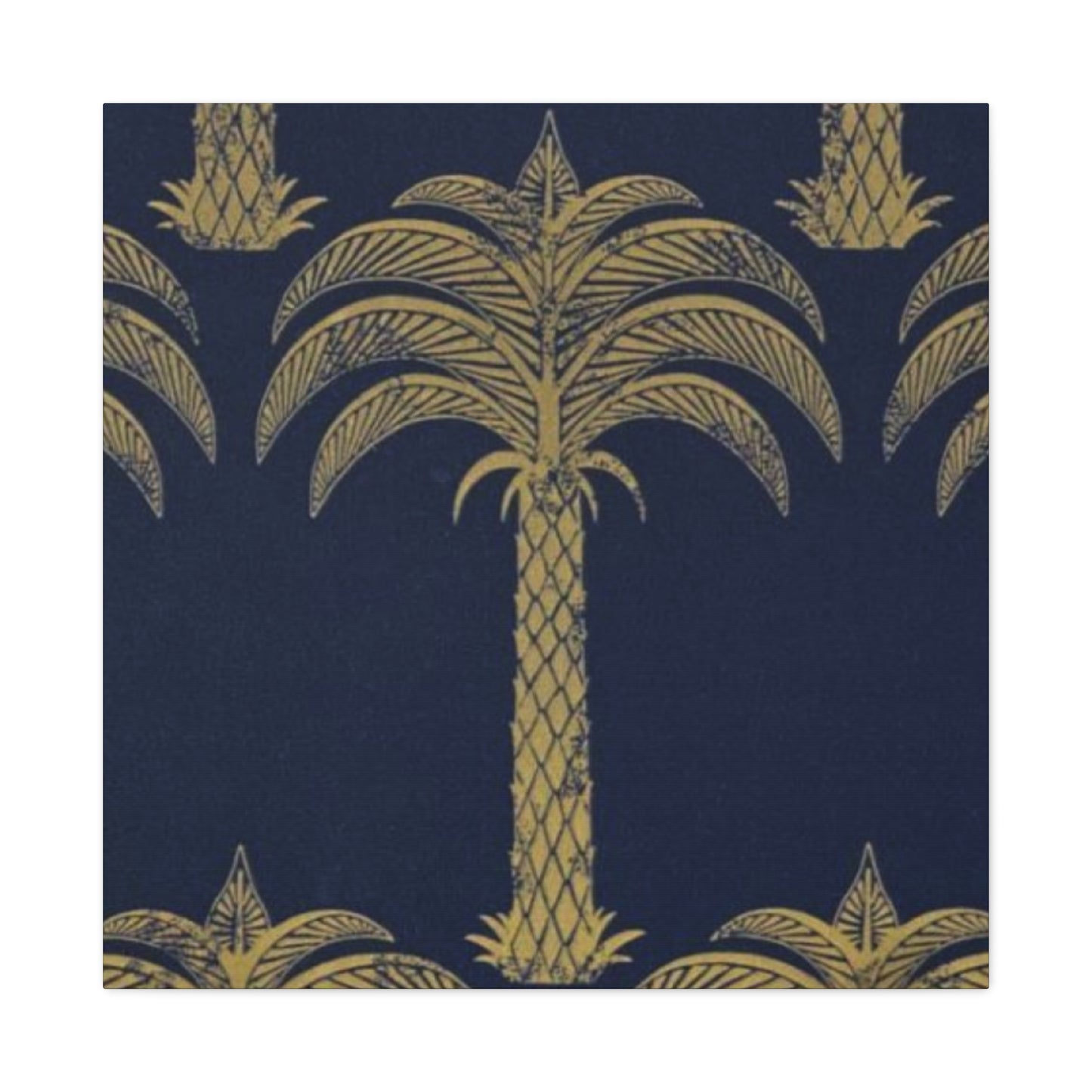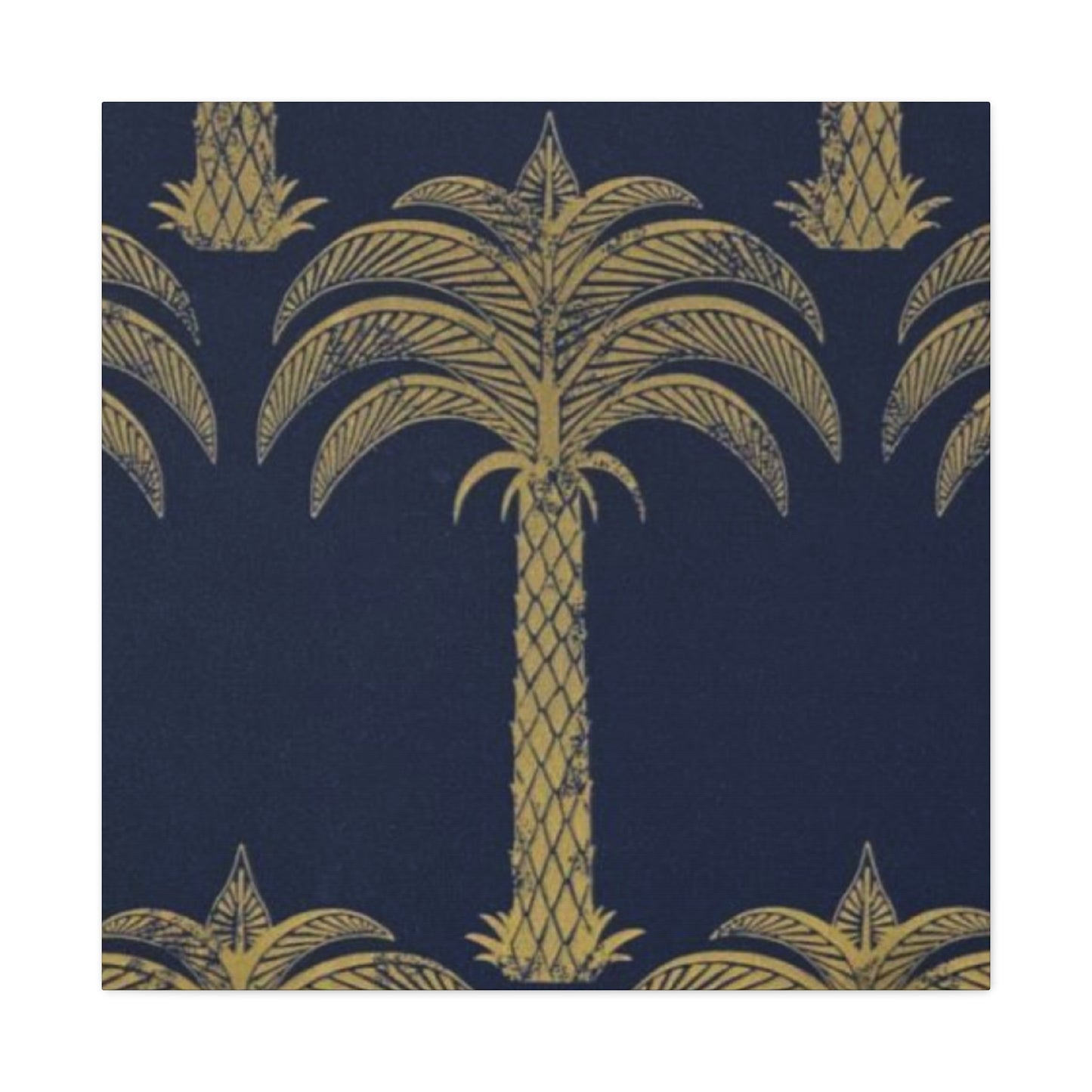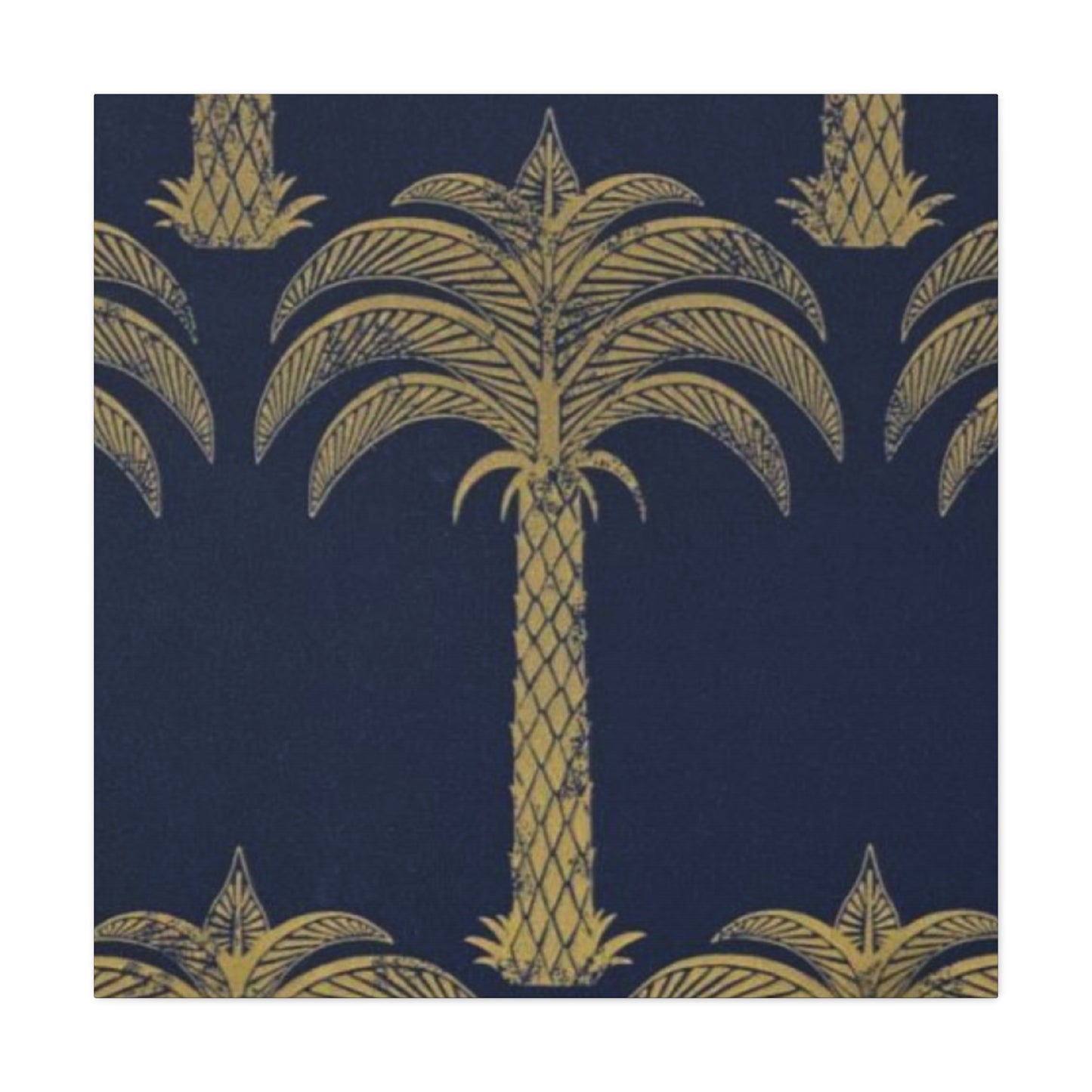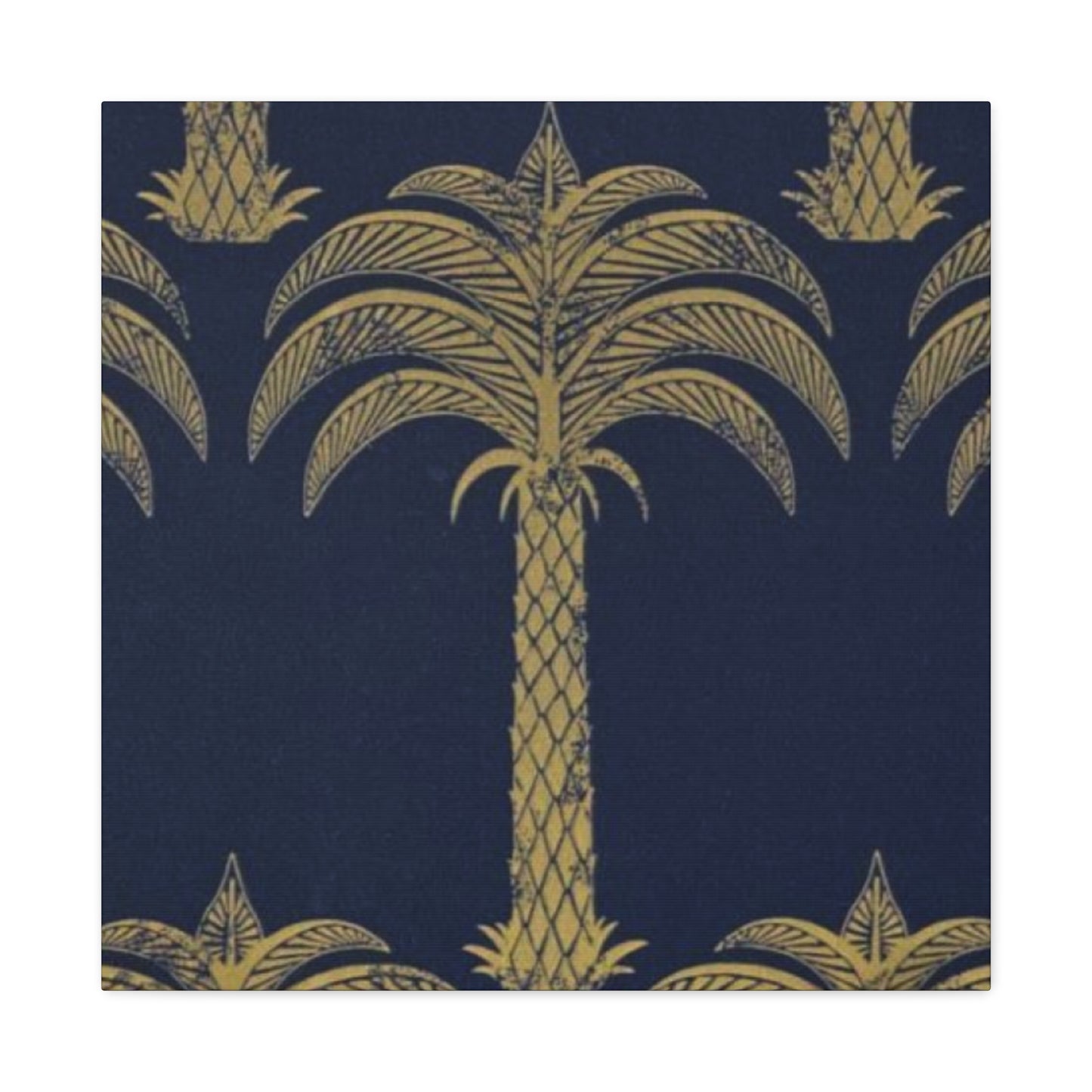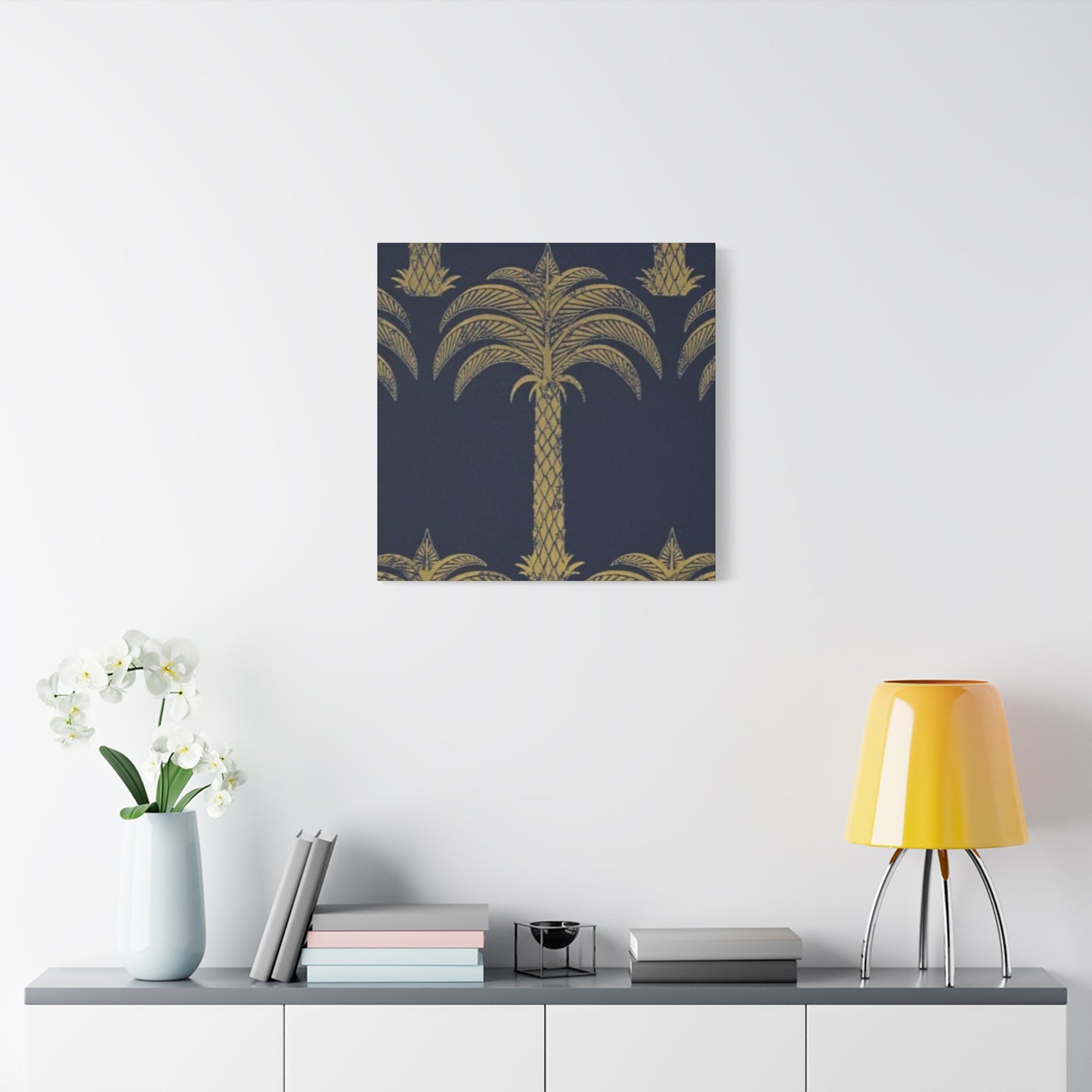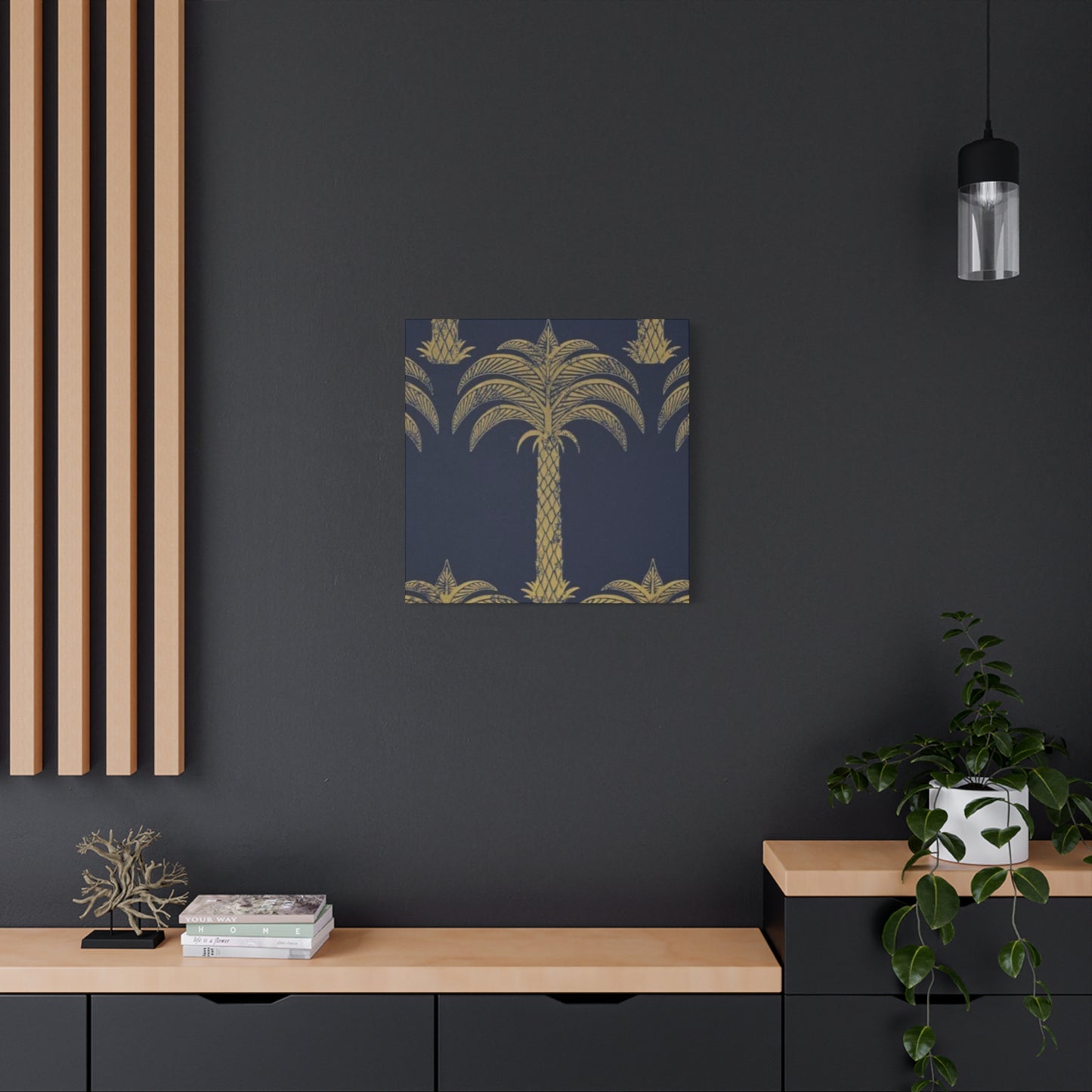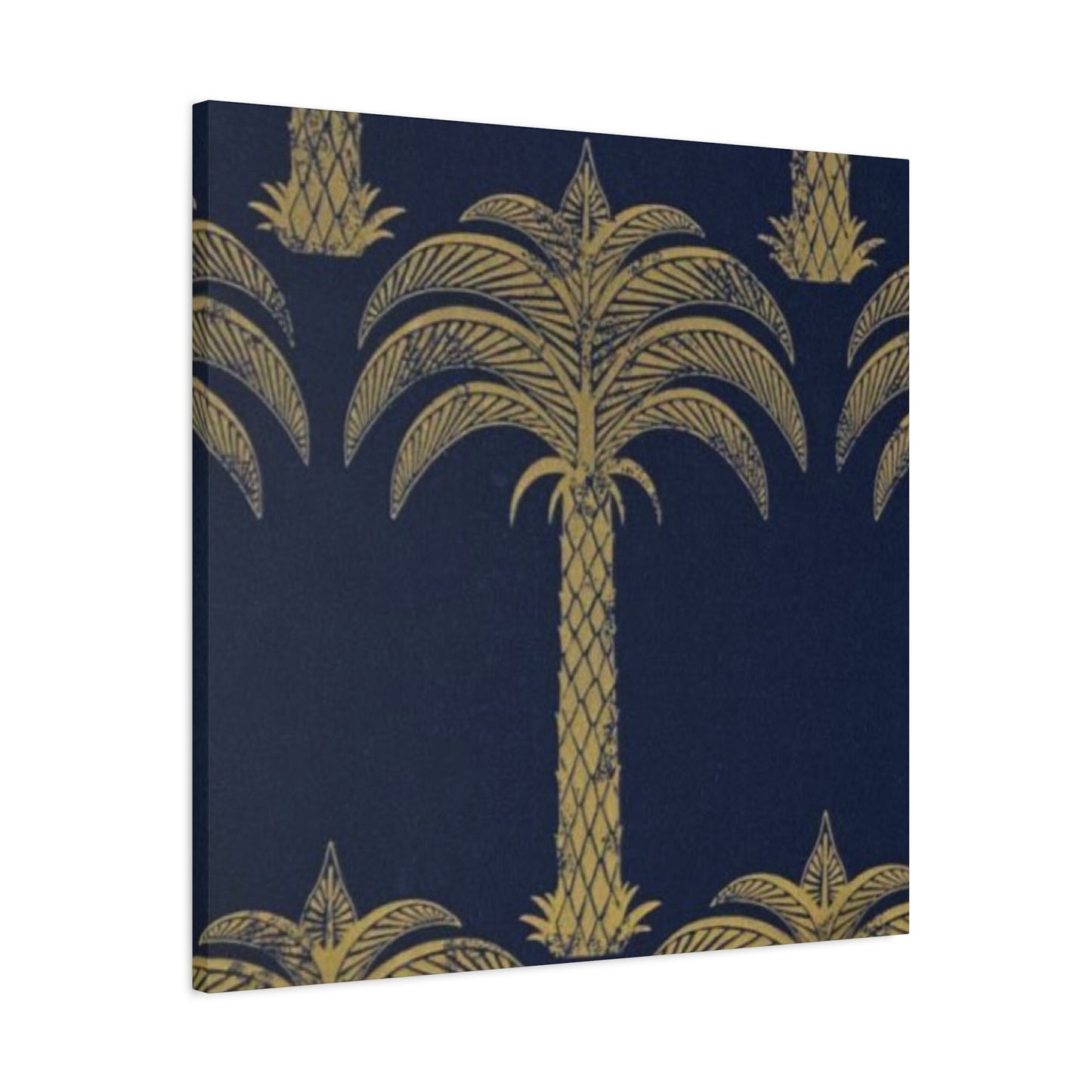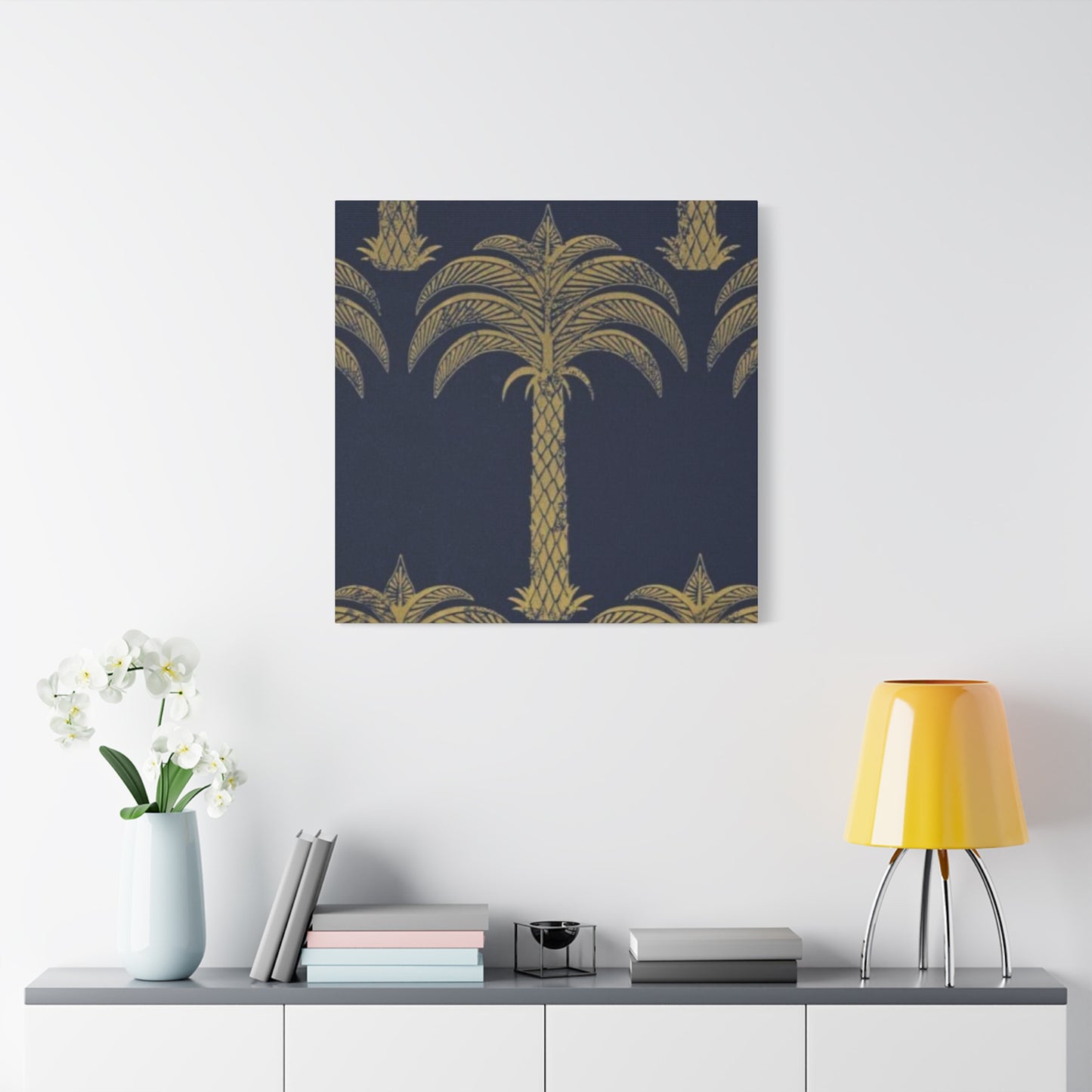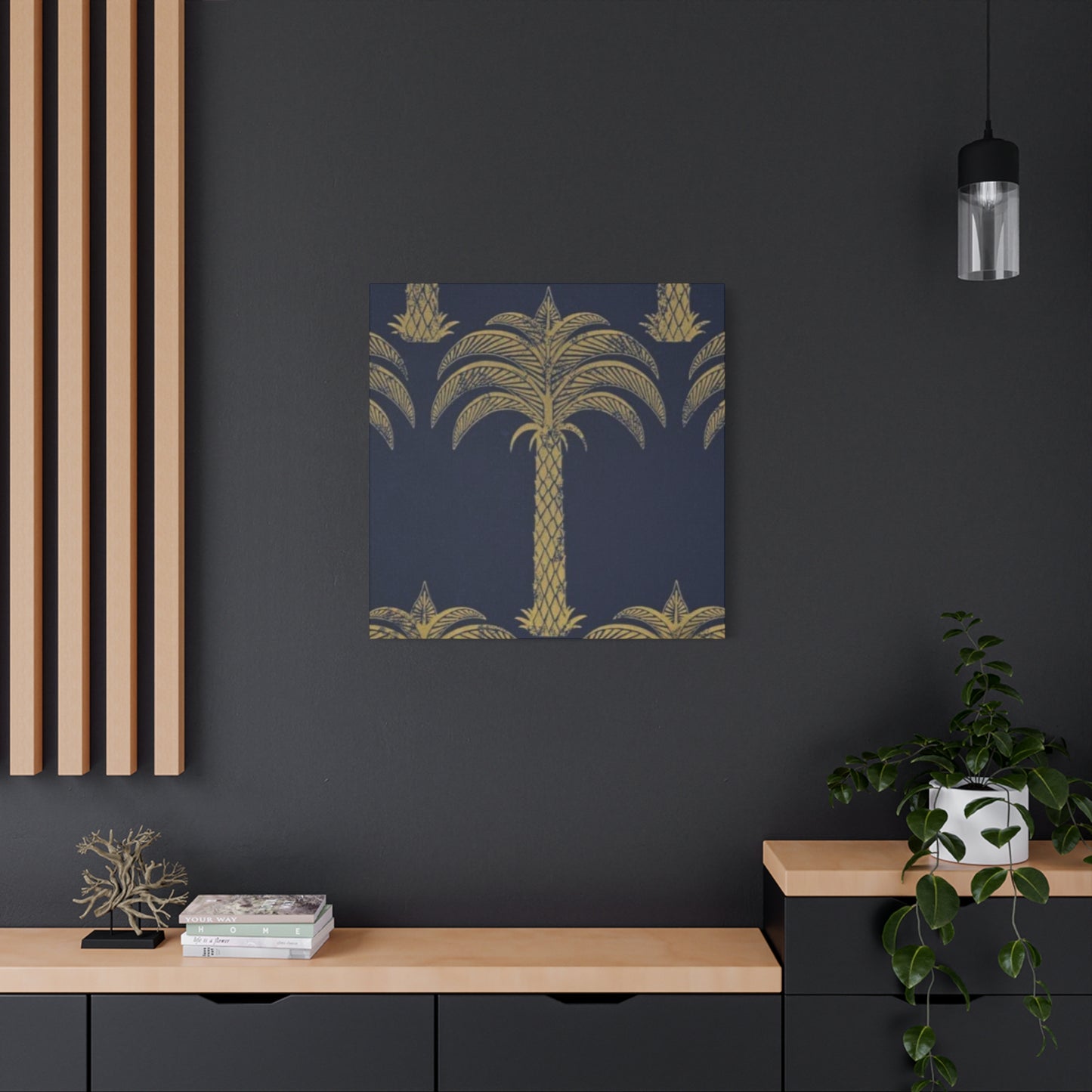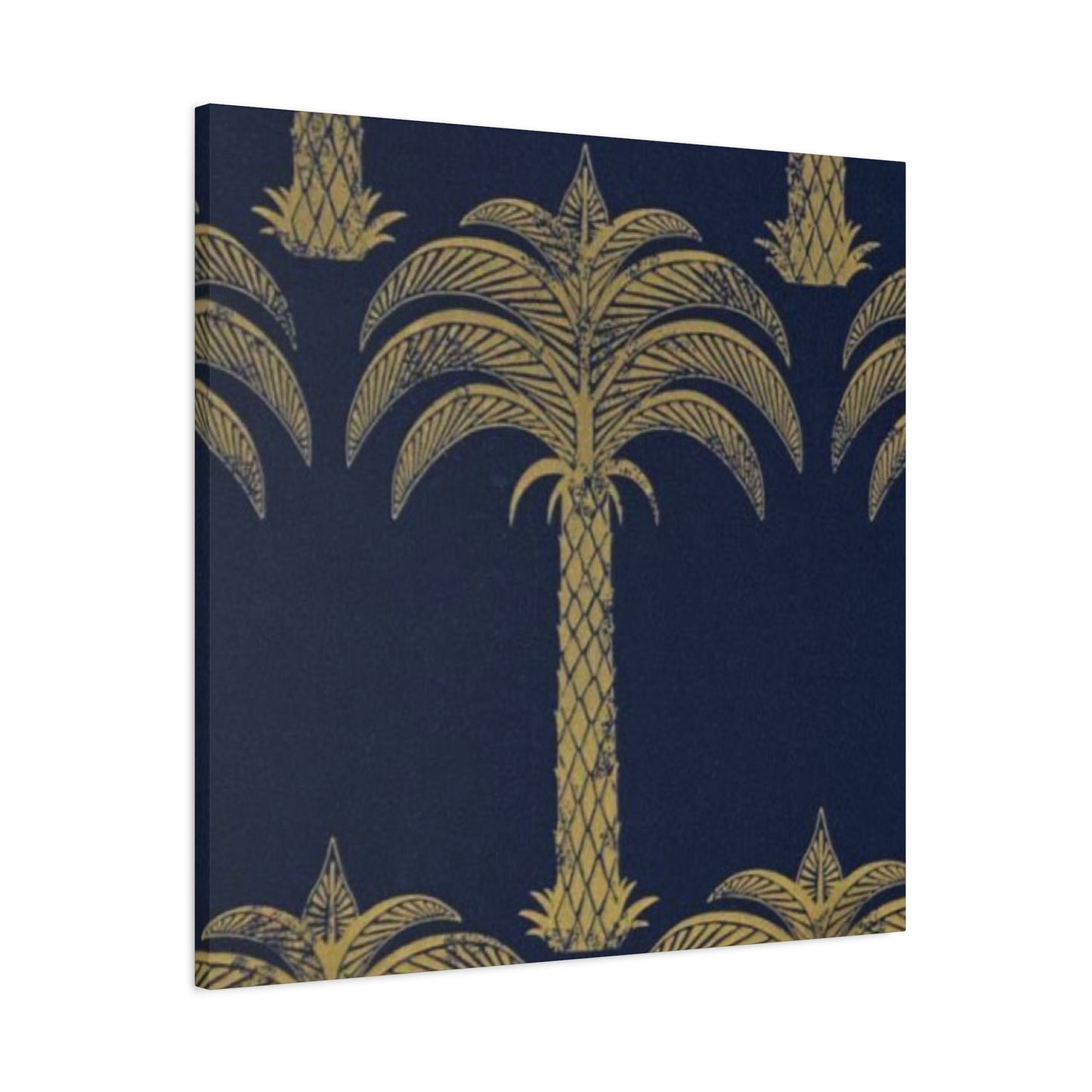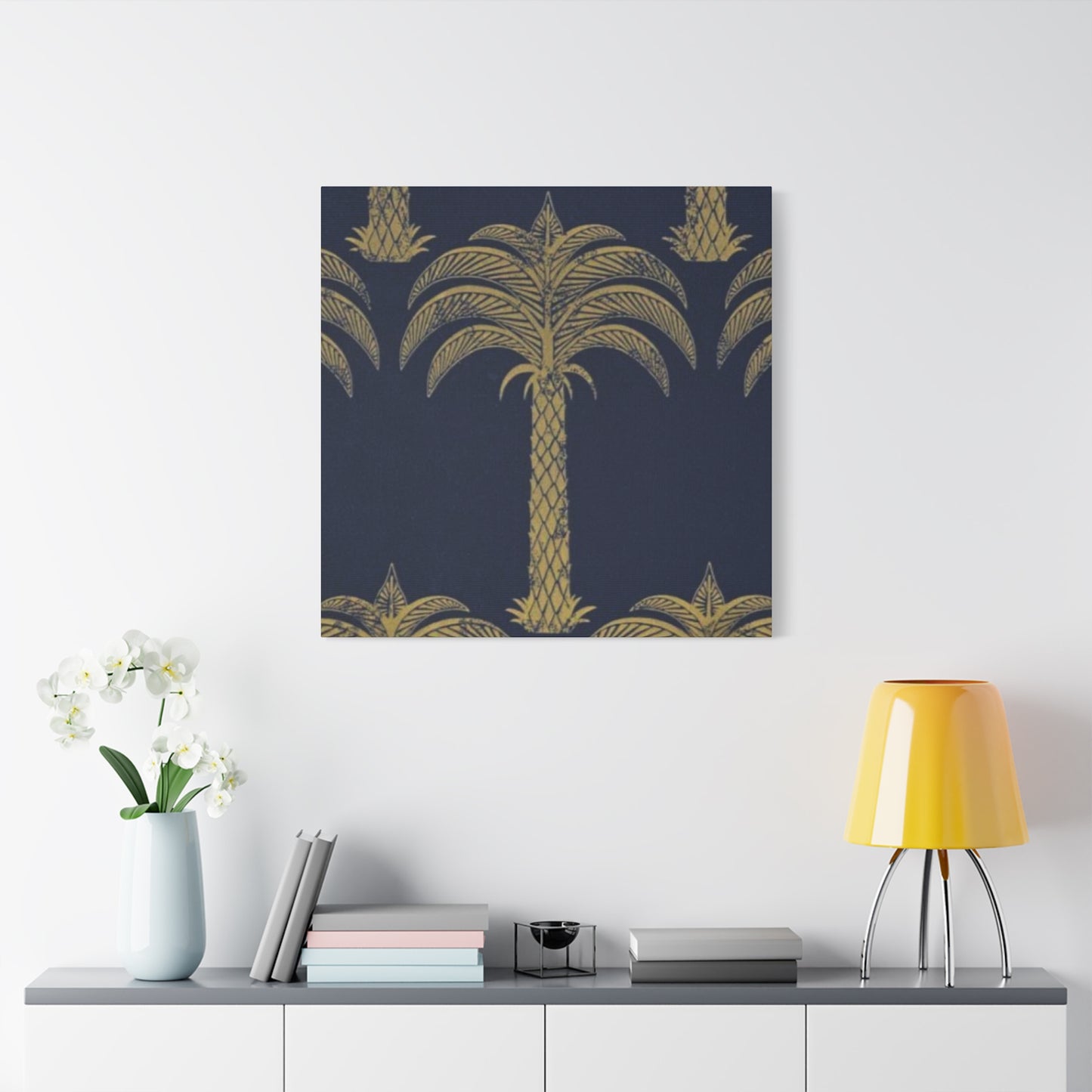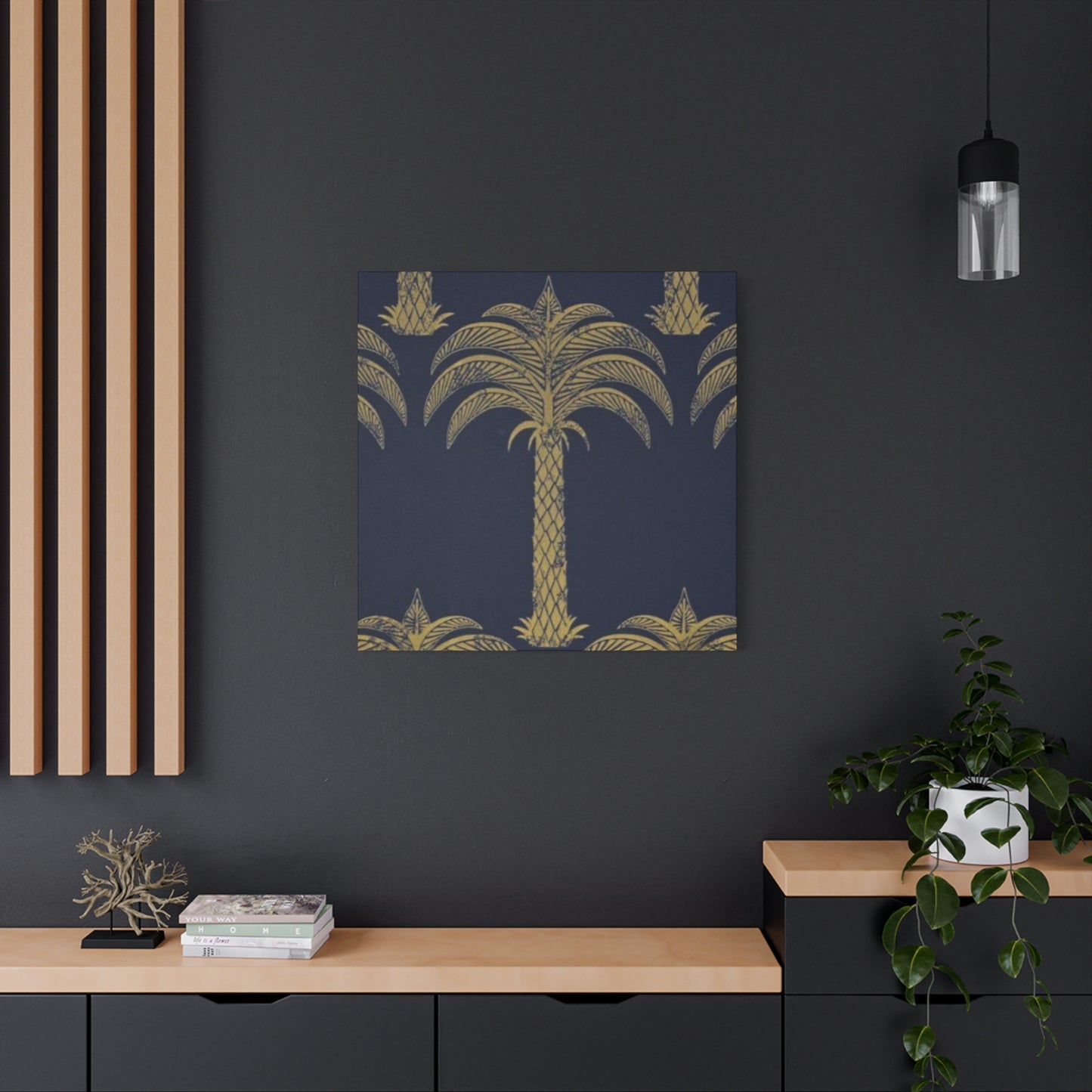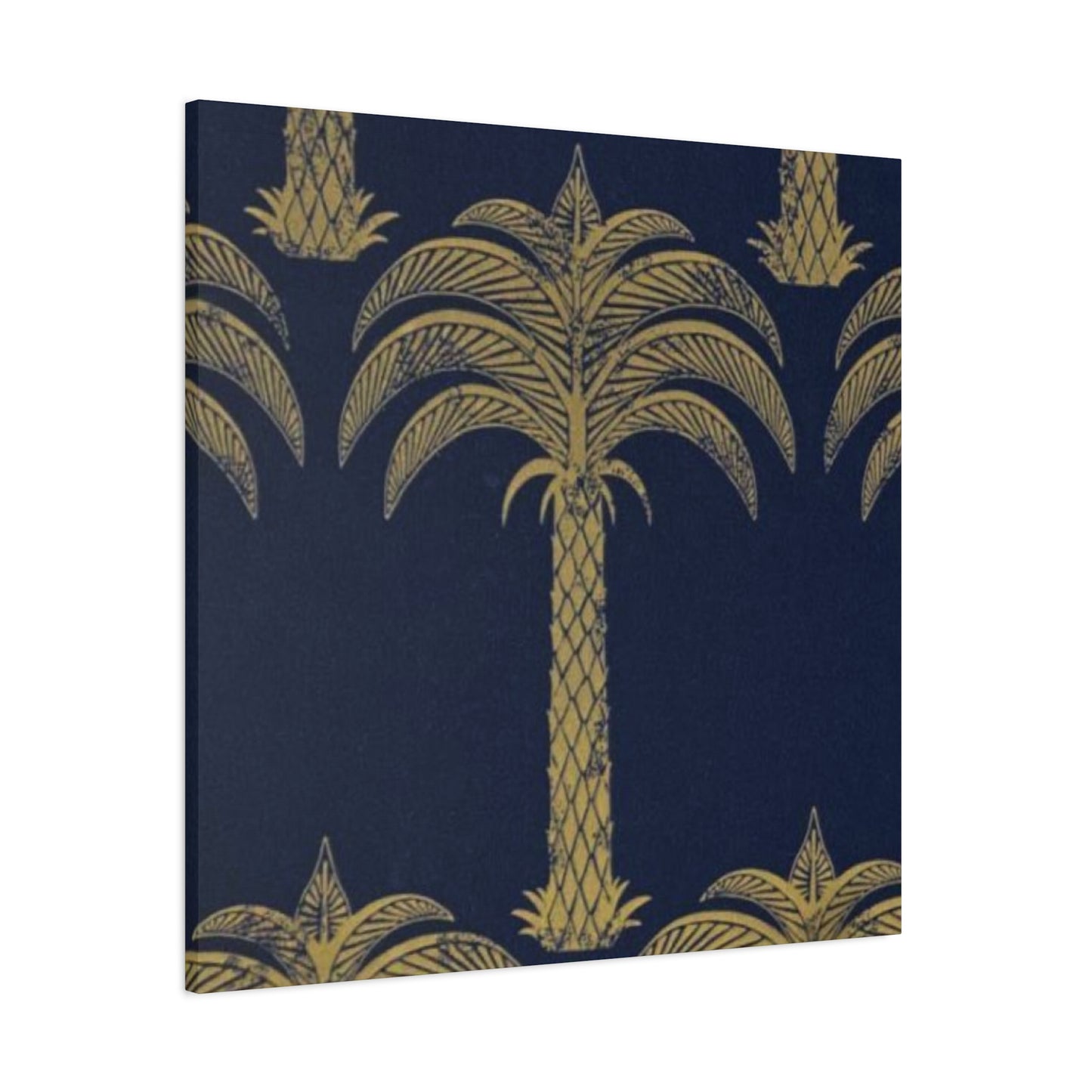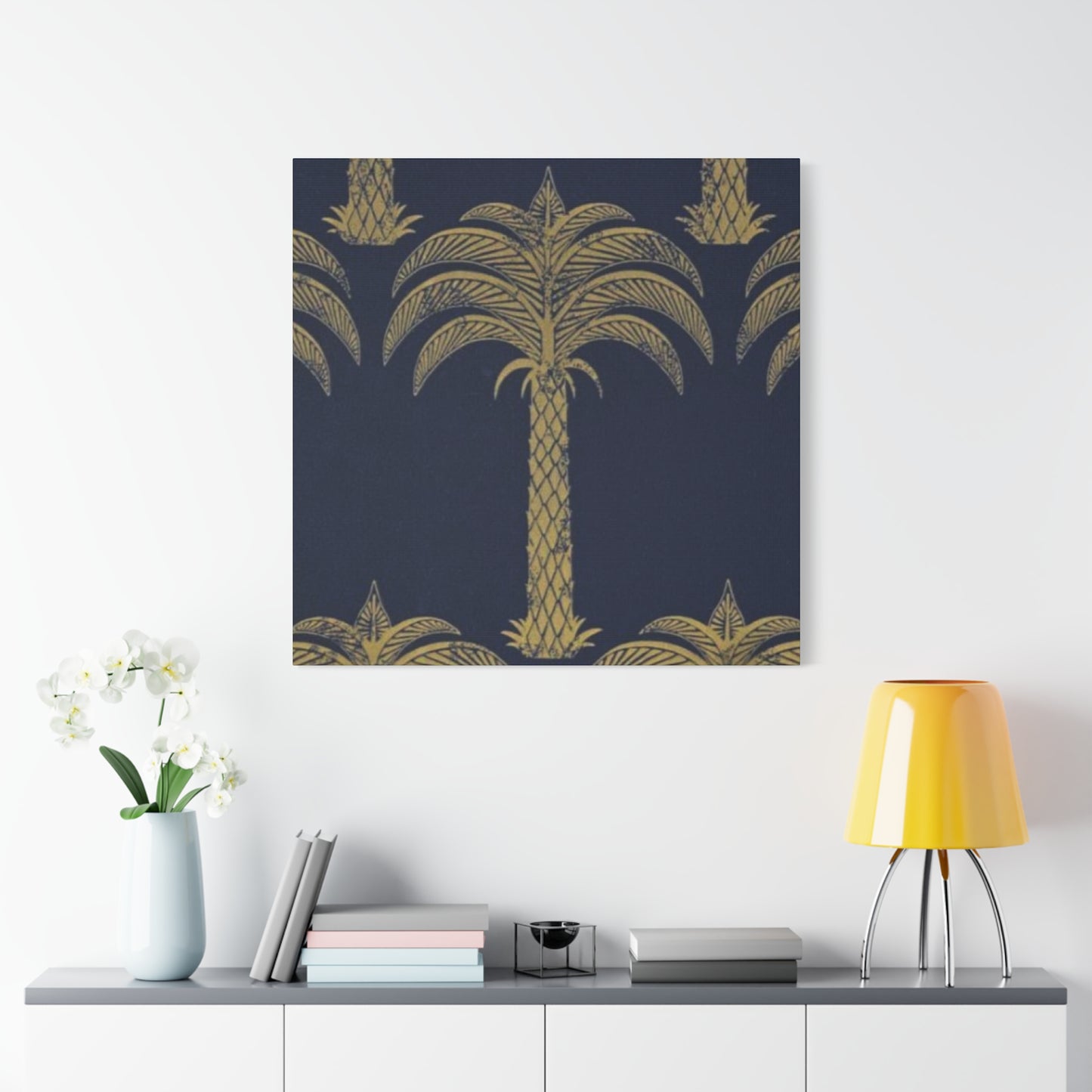Tropical Vibes: Elevate Your Space with Palm Tree Symbol Wall Art
The palm tree has long captivated human imagination as a powerful emblem representing resilience, victory, and tranquility. When incorporated into interior design through wall art, this iconic symbol transforms living spaces into sanctuaries that evoke tropical serenity and timeless elegance. The graceful silhouette of palm fronds swaying against open skies carries deep cultural significance across civilizations, making it far more than mere decoration. From ancient Egyptian hieroglyphics to modern minimalist aesthetics, the palm motif continues to inspire homeowners and designers seeking to create environments that balance natural beauty with intentional symbolism.
Incorporating palm tree imagery into your home offers endless creative possibilities that extend beyond simple tropical themes. Whether you're drawn to the spiritual connotations of peace and eternal life, the coastal associations with vacation memories and ocean breezes, or the contemporary clean lines that suit modern interiors, palm tree wall art adapts beautifully to diverse design philosophies. The versatility of this symbol allows it to anchor rustic farmhouse settings as effortlessly as it enhances sleek urban lofts, proving that natural elements possess universal appeal that transcends specific decorating trends.
The rising popularity of botanical artwork reflects a broader cultural shift toward bringing outdoor elements inside, creating living spaces that promote wellness and connection to nature. Palm tree symbols serve this purpose exceptionally well, offering visual cues that psychologically transport viewers to calming environments even when displayed in bustling city apartments. The organic curves and repetitive patterns found in palm fronds also provide aesthetic balance that complements both minimalist and maximalist design approaches, making these pieces valuable additions to any art collection.
Understanding how to select, position, and style palm tree wall art requires consideration of factors including room function, existing color palettes, architectural features, and personal aesthetic preferences. The market offers remarkable variety ranging from affordable prints to investment-quality original paintings, from realistic photography to abstract interpretations that reimagine the palm form through artistic innovation. This comprehensive exploration will guide you through strategic approaches to incorporating palm symbolism into your interior spaces while maintaining cohesive design that reflects your unique vision.
Palm Tree Symbol Wall Art Ideas
Creating captivating interior spaces with palm tree artwork begins with understanding the vast array of presentation styles available to contemporary decorators. The symbol itself can be rendered through countless artistic approaches, each conveying distinct moods and complementing different design sensibilities. Photographic representations capture the authentic texture of bark and the intricate geometry of fronds with scientific precision, appealing to those who appreciate naturalistic accuracy. These images often feature dramatic lighting conditions such as golden hour backlighting or silhouettes against sunset skies that enhance the romantic associations with tropical destinations.
Illustrated palm tree artwork offers an entirely different aesthetic dimension, ranging from botanical line drawings that emphasize structural elegance to whimsical cartoon representations that inject playful energy into casual spaces. Watercolor renditions provide soft, dreamy interpretations with bleeding edges and translucent layering that evokes the fluid movement of palm fronds in ocean breezes. Oil paintings deliver rich textural depth through visible brushstrokes and dimensional paint application that adds tactile interest to wall displays. Each medium carries its own emotional weight and visual impact, allowing you to curate collections that resonate with your personal style while serving specific decorative functions.
Abstract interpretations of palm symbolism push creative boundaries by distilling the essential form into geometric shapes, color field compositions, or expressionistic gestures that suggest rather than depict the subject. These contemporary approaches work exceptionally well in modern interiors where literal representations might feel incongruous with minimalist furniture and clean architectural lines. Metallic palm silhouettes crafted from copper, bronze, or brushed steel introduce industrial elements that bridge natural subject matter with urban sophistication. Three-dimensional wooden palm cutouts add sculptural dimension that creates engaging shadow play as natural light shifts throughout the day.
Size considerations dramatically affect the impact of palm tree wall art within different spaces. Oversized statement pieces measuring several feet in height or width command attention as focal points that anchor entire room compositions, working particularly well above substantial furniture like sofas or beds. Medium-sized works measuring approximately two to three feet function beautifully as secondary visual interest points that support rather than dominate spatial hierarchies. Smaller palm prints grouped in gallery configurations create dynamic arrangements that guide eye movement across walls while offering flexibility for future rearrangement as tastes evolve or spaces are repurposed.
Color selection in palm tree artwork significantly influences mood and compatibility with existing decor schemes. Traditional green and brown palettes reinforce natural associations and integrate seamlessly with earth-toned interiors, botanical collections, and spaces emphasizing organic materials like wood, stone, and natural fiber textiles. Monochromatic black and white palm images deliver sophisticated graphic impact that suits contemporary aesthetics while offering versatility to complement virtually any color scheme without competing for visual attention. Unexpected color treatments such as pink palms against turquoise skies or gold-leafed fronds on navy backgrounds inject personality and artistic flair that transforms familiar imagery into conversation-starting design elements.
Meaningful Decor: Palm Tree Symbolism
The palm tree carries profound symbolic weight across diverse cultural and religious traditions spanning thousands of years, making it far more meaningful than simple decorative motif. In ancient Egyptian civilization, the palm represented concepts of year-long sustenance and cyclical renewal, as date palms provided reliable food sources throughout all seasons. Egyptian artists frequently incorporated palm columns into temple architecture and depicted palm branches in funerary art symbolizing resurrection and eternal life. This association with immortality persisted through subsequent cultures, establishing the palm as an enduring emblem of transcendence beyond mortal limitations.
Judeo-Christian traditions embrace palm symbolism with particular fervor, most notably through the Palm Sunday narrative where crowds welcomed Jesus into Jerusalem by waving palm fronds and laying them along his path. This biblical account transformed palms into symbols of triumph, peace, and divine favor that continue resonating in religious art and architecture worldwide. Early Christian martyrs were often depicted holding palm branches representing their spiritual victory over death, while Paradise itself was frequently illustrated as a palm-filled oasis representing heavenly rewards. These sacred associations lend palm tree artwork spiritual dimensions that extend beyond aesthetic considerations for believers who appreciate these deeper layers of meaning.
Islamic art and literature similarly honor the palm tree as blessed vegetation specifically mentioned in the Quran as among the finest plants created for human benefit. Date palms provided essential sustenance in arid Middle Eastern regions where Islam originated, earning reverence as divine provision supporting life in harsh environments. The palm's ability to thrive in extreme heat and scarce water conditions made it a natural metaphor for faith that persists despite adversity. Geometric patterns derived from palm frond arrangements appear throughout Islamic architectural ornamentation, demonstrating how this plant's natural forms influenced artistic traditions across the Muslim world.
Greek and Roman civilizations associated palms with victory and triumph, crowning successful athletes and military commanders with palm wreaths as marks of honor. The Latin phrase "palma" became synonymous with prize and acclaim, while goddess Nike was frequently depicted holding palm branches alongside laurel wreaths. This classical heritage infused palm symbolism with connotations of achievement and excellence that persist in modern contexts, from academic and sports awards to corporate branding seeking to convey success. Displaying palm artwork can therefore serve as visual affirmation of personal victories or aspirations toward excellence in various life endeavors.
Tropical Symbolism in Palm Wall Art
Tropical aesthetics have experienced remarkable resurgence in contemporary interior design as people increasingly seek to create residential environments that offer psychological escape from demanding modern lifestyles. Palm wall art serves as cornerstone element in tropical design schemes that transport inhabitants to imagined island paradises characterized by leisurely pacing, natural beauty, and freedom from conventional constraints. The mere presence of palm imagery triggers mental associations with warm climates, pristine beaches, and vacation states of mind that provide daily doses of visual escapism even in landlocked urban apartments or cold northern climates where actual palm trees cannot survive outdoors.
Authentic tropical design extends beyond simple palm placement to encompass cohesive aesthetic strategies incorporating complementary colors, textures, patterns, and decorative objects that work synergistically to create convincing tropical atmospheres. Palm artwork becomes most effective when integrated with broader design elements including rattan furniture, bamboo accents, natural fiber rugs, and tropical plant specimens that reinforce the overall theme. Color palettes drawing from tropical environments typically feature oceanic blues and teals, sunset oranges and corals, lush foliage greens, and sandy neutral tones that echo beach landscapes. Palm art in these harmonious color families enhances thematic cohesion while avoiding the disjointed feeling that results from mismatched tropical elements.
The tropical design movement draws inspiration from various regional traditions including Caribbean colonial architecture with its breezy louvered shutters and spacious verandas, Polynesian thatched roof structures emphasizing natural materials and open-air living, and Southeast Asian tropical modernism blending indigenous building techniques with contemporary minimalism. Palm artwork can be styled to reflect these distinct regional influences through careful selection of presentation styles and complementary decorative choices. British colonial tropical interiors pair palm prints in dark wood frames with campaign furniture and plantation shutters, while Balinese-inspired spaces combine palm art with carved wooden sculptures, batik textiles, and low-profile seating that encourages floor-level relaxation.
Maximalist tropical design embraces abundant pattern mixing, vibrant color saturation, and dense layering of decorative elements that create visually stimulating environments brimming with energy and personality. In these exuberant spaces, palm artwork contributes to overall abundance rather than serving as solitary focal points, often appearing alongside banana leaf prints, monstera illustrations, orchid paintings, and other botanical subjects in gallery wall configurations. Bold tropical patterns including palm frond prints on throw pillows, area rugs, and window treatments reinforce themes established by wall art while distributing visual interest throughout entire rooms. This approach suits extroverted personalities who find joy in visual complexity and reject minimalist restraint in favor of decorative abundance.
Modern Palm Tree Symbol Canvas
Contemporary artistic interpretations of palm tree imagery have evolved dramatically from traditional representational approaches, embracing abstraction, geometric simplification, and experimental techniques that reimagine this familiar subject through innovative visual languages. Modern palm canvases often reduce the organic complexity of actual palm trees to essential graphic elements, creating striking compositions that function as much as design objects as botanical representations. These simplified forms translate beautifully to canvas presentations where visible texture and brushwork add dimensional interest that elevates prints beyond flat photographic reproductions.
Geometric palm abstractions deconstruct the palm form into angular shapes, overlapping planes, and bold color blocking that challenge viewers to recognize familiar subjects within non-representational compositions. These works draw inspiration from Cubist fragmentation and mid-century modern graphic design, creating palm imagery that feels simultaneously retro and contemporary. The hard-edged precision of geometric compositions provides visual counterpoint to the organic curves naturally associated with palm fronds, generating dynamic tension that activates wall spaces with graphic punch. Such pieces work exceptionally well in modern interiors featuring angular furniture, industrial materials, and architectural details emphasizing clean lines over ornamental complexity.
Minimalist palm canvases embrace the design principle that less is more, featuring spare compositions with abundant negative space that allows single palm silhouettes or even isolated frond details to command attention through placement and proportion rather than visual complexity. These works often employ limited color palettes of two or three hues, sometimes restricting compositions to pure black and white for maximum graphic impact. The restraint inherent in minimalist palm art makes these pieces particularly suitable for small spaces where busy compositions might feel overwhelming, or in rooms already containing substantial visual interest through patterned textiles, collections, or architectural features. Minimalist approaches prove that powerful design impact requires neither size nor complexity when composition and execution demonstrate mastery.
Large-scale palm canvases measuring four feet or larger create dramatic vertical or horizontal statements that transform walls into commanding focal points demanding attention in even spacious rooms. These substantial works suit high-ceiling living rooms, primary bedrooms, or commercial spaces like hospitality lobbies and restaurant dining rooms where impressive scale matches architectural grandeur. Canvas construction becomes particularly advantageous at large scales since stretched canvas weighs significantly less than equivalent glass-framed prints, simplifying installation while reducing structural concerns about wall support. The texture visible in canvas weave adds subtle visual interest particularly noticeable in large formats where viewers can approach closely enough to appreciate material qualities alongside printed imagery.
Triptych and diptych palm canvases divide single images across multiple panels or present related compositions that function as unified installations despite physical separation. These multi-panel presentations create dynamic visual rhythms as eyes track across gaps between canvases, while also offering practical advantages for installation flexibility and transportation. A three-panel palm triptych might span eight or ten feet across a wall, creating gallery-worthy presentations without requiring custom framing for a single massive artwork. The spaces between panels introduce architectural elements into the composition itself, as wall color becomes part of the visual experience and can be changed to alter the overall appearance without replacing the artwork.
Minimalist Palm Symbol Wall Prints
Minimalist design philosophy emphasizes intentional simplicity, functional beauty, and the elimination of unnecessary elements to create serene environments that reduce visual noise and mental clutter. Palm symbol prints interpreted through minimalist aesthetics distill botanical complexity into essential forms rendered with spare elegance that maximizes impact through restraint rather than abundance. These pieces typically feature generous white or neutral backgrounds that create breathing room around central palm motifs, allowing organic shapes to command attention without competition from busy patterns or excessive color variation.
Line drawing palm prints exemplify minimalist approaches by reducing entire trees to continuous contours that capture essential shapes through economy of mark-making. Single-line drawings where artists never lift pen from paper create particularly elegant compositions that guide viewer eyes along fluid paths tracing palm silhouettes. These technical demonstrations of artistic control result in deceptively simple appearances that belie the considerable skill required to achieve graceful proportions and recognizable forms using minimal means. Black ink on white backgrounds provides classic high-contrast presentations, though variations using navy, forest green, or charcoal gray offer subtle alternatives that integrate more softly with diverse color schemes.
Negative space plays crucial roles in minimalist palm prints where areas of emptiness contribute as significantly to compositions as marked areas depicting actual palm forms. Skilled minimalist designers understand that blank backgrounds aren't merely absence of content but active compositional elements that create visual balance, establish hierarchies, and provide psychological rest for viewer eyes. Palm prints featuring small palm silhouettes positioned strategically within large expanses of neutral space can feel more impactful than busy compositions filling entire picture planes, as surrounding emptiness draws attention toward carefully placed focal points while conveying sophisticated restraint.
Scandinavian-influenced palm prints combine minimalist composition strategies with soft, muted color palettes characteristic of Nordic design sensibilities. These works might feature palm silhouettes in sage green, dusty blue, or warm gray against off-white or cream backgrounds, creating gentle contrasts that feel calming rather than stark. The resulting aesthetic bridges tropical palm associations with cool northern design traditions, producing unexpected hybrid styles that work beautifully in contemporary interiors seeking to balance warmth and restraint. This cultural design fusion demonstrates how palm imagery adapts successfully to diverse aesthetic contexts beyond obvious tropical applications.
Typography-integrated palm prints combine botanical imagery with inspirational words, geographical place names, or poetic fragments that add conceptual layers to visual compositions. Minimalist executions keep text elements spare and deliberately positioned, often using sans-serif typefaces that echo the clean lines of simplified palm forms. A print might feature a single palm silhouette above the word "Paradise" in understated letterforms, or coordinate points marking a meaningful tropical destination where palms grow. These hybrid text-image works function as both visual art and linguistic communication, appealing to those who appreciate conceptual depth alongside aesthetic beauty in their wall art selections.
Spiritual Calm: Palm Tree Decor
The intersection of spiritual practices and interior design recognizes that physical environments profoundly affect consciousness, emotional states, and capacity for contemplative practice. Palm tree decor selected and positioned intentionally can support meditation practices, prayer routines, and general spiritual well-being by creating visual anchors that quiet mental chatter and direct attention toward transcendent awareness. The organic forms and cultural associations with sacred groves, desert oases, and biblical narratives make palm imagery particularly suitable for spaces dedicated to spiritual development and inner peace cultivation.
Meditation spaces benefit from palm artwork that provides focal points for visual meditation techniques without introducing distracting complexity or emotional provocation. A simple palm silhouette at eye level from seated meditation posture offers a gentle anchor for soft-gaze practices where eyes remain partially open but unfocused, preventing drowsiness while maintaining inward attention. The vertical orientation of palm trunks naturally guides attention upward, subtly encouraging the lifted posture and energetic alignment beneficial for extended meditation sessions. Choosing palm art in calming blues, soft greens, or neutral tones reinforces the peaceful atmosphere essential for successful contemplative practice.
Prayer and reflection corners in homes of various faith traditions can incorporate palm imagery connected to specific religious symbolism while creating beautiful contemplative environments. Christian practitioners might choose palm artwork referencing Palm Sunday or martyrdom traditions, positioning these images near prayer kneelers, crosses, or scripture reading chairs. Jewish households could integrate palm or date imagery connecting to Sukkot celebrations and ancient temple descriptions. Islamic homes might feature stylized palm representations near prayer mats, honoring Quranic references to date palms as blessed provision. These faith-specific applications transform generic palm decor into meaningful spiritual tools supporting religious practices.
Zen Buddhist aesthetic principles including wabi-sabi appreciation for imperfection and transience find natural alignment with certain palm art presentations, particularly those emphasizing weathered textures, asymmetrical compositions, or the interplay between living plants and decay. Artwork depicting storm-damaged palms continuing to produce new growth illustrates Buddhist teachings about suffering, impermanence, and resilience. Minimalist palm representations using sumi-e ink painting techniques connect to Zen artistic traditions emphasizing spontaneity, essential forms, and the spiritual discipline required to execute deceptively simple brushwork that captures life essence in few decisive marks.
Coastal Vibes with Palm Symbol Art
Coastal design aesthetics capture the relaxed elegance of beachfront living through color palettes, material choices, and decorative elements that evoke seaside environments and maritime traditions. Palm symbol art serves as natural anchor for coastal schemes given the ubiquitous presence of palm trees along tropical and subtropical shorelines worldwide. Integrating palm imagery with broader coastal themes creates cohesive interior narratives that transport inhabitants to beloved beach destinations regardless of actual geographical location or proximity to ocean waters.
Color coordination forms the foundation of successful coastal design featuring palm artwork, with palettes drawing directly from beach and ocean environments. Soft sandy beiges and warm taupes reference beaches and dunes, while various blue shades from pale sky tones to deep navy evoke ocean depths and coastal skies. Crisp white suggests sea foam and sun-bleached driftwood, creating bright, airy foundations that maximize natural light reflection. Coral, aqua, and seafoam green provide accent colors that inject personality without overwhelming the serene foundation established by neutral backgrounds. Palm art incorporating these coastal colors integrates seamlessly while reinforcing thematic consistency throughout decorated spaces.
Natural material selections complement palm artwork within coastal schemes by emphasizing textures and substances shaped by marine environments. Weathered wood furniture and accents suggest driftwood pieces tumbled by waves and aged by salt air, their silvered finishes harmonizing beautifully with palm imagery. Rattan and wicker seating provides casual comfort while referencing tropical origins where palms and woven furnishings share geographical contexts. Natural fiber rugs woven from jute, sisal, or seagrass bring tactile coastal character underfoot while their neutral tones support rather than compete with palm wall art. Linen textiles in slipcovers and curtains contribute breezy, casual elegance characteristic of refined coastal living.
Nautical elements carefully integrated with palm art develop richly layered coastal aesthetics without veering into literal beach house cliché. Vintage brass maritime instruments like compasses or sextants displayed alongside palm prints create collected-over-time character. Model sailboats positioned on shelves or mantels near palm artwork suggest beach house locations where boats and palm trees coexist naturally. Rope details incorporated in mirror frames, curtain tiebacks, or shelf edge trim introduce textural maritime references that complement rather than overshadow botanical wall art. The key lies in restraint, selecting few meaningful nautical touches that enhance themes rather than overwhelming spaces with every conceivable beach symbol.
Seaside photography paired with palm artwork in gallery wall arrangements tells richer coastal stories than either subject alone could communicate. Combining palm tree prints with seashell close-ups, wave motion captures, pier perspective shots, and beach landscape photography builds visual narratives about complete coastal ecosystems and beach experiences. These curated collections feel personalized and intentional, particularly when photographs come from meaningful locations holding special memories. The variety in subject matter maintains visual interest across gallery walls while palm images serve as recognizable anchors that unify diverse photographic selections.
Coastal cottage style employs palm artwork within relaxed, comfortable settings that prioritize livability over formal presentation. Furniture feels inviting with plush cushions and casual slipcovers that welcome daily use, while decorative accessories lean toward functional items like baskets and ceramic bowls that serve purposes beyond mere display. Palm art in these contexts often features distressed or rustic framing that matches the aged character of furnishings and architectural elements. The overall effect feels collected gradually rather than purchased as matching sets, creating authentic rather than staged coastal environments that truly function as lived-in homes.
Entryway Accent: Palm Tree Symbol
Entry spaces serve as transitional zones between exterior public realms and interior private domains, making them psychologically significant areas that benefit from thoughtful decorative attention despite often limited square footage. Palm tree symbol artwork positioned in entryways creates immediate impressions that signal the aesthetic character and emotional tone permeating entire homes. The welcoming associations with palm-lined approaches and tropical hospitality make this imagery particularly appropriate for entry applications where creating positive first impressions serves important social functions.
Scale considerations become especially critical in entryway applications where spaces often feature awkward proportions with narrow widths, considerable height, or odd angles that challenge furniture and artwork placement. Vertical palm prints emphasizing trunk height naturally suit narrow entry walls where horizontal orientations might feel cramped or disproportionate. Conversely, entry halls with substantial width but limited height benefit from horizontal palm compositions that visually expand space without emphasizing low ceiling constraints. Properly scaled artwork transforms challenging entry proportions into design assets by working with rather than against inherent spatial characteristics.
Lighting conditions in windowless or poorly lit entries require specific consideration when selecting palm artwork to ensure visual impact isn't diminished by inadequate illumination. Lighter palm images featuring bright backgrounds or sun-drenched scenes reflect available light more effectively than dark compositions that might disappear into shadows. Installing picture lights or directional spotlights above palm artwork ensures consistent visibility regardless of natural light availability while adding sophisticated gallery presentation quality. LED strip lighting behind floating canvases creates dramatic halo effects that make palm images appear luminous even in dim conditions, transforming utilitarian entry lighting into design features that enhance both artwork and spatial atmosphere.
Furniture pairing in entries must balance functional storage needs with aesthetic presentation, creating vignettes where palm artwork serves as visual anchor for complete decorative compositions. Console tables positioned beneath palm prints provide surfaces for key bowls, mail sorting, and decorative accessories that personalize entries while maintaining organized appearances. Mirrors hung adjacent to palm artwork multiply visual interest through reflection while enhancing light distribution and creating illusions of expanded space particularly valuable in compact entries. Benches or small stools positioned near doorways offer practical seating for shoe removal while contributing to furnished appearance that makes entries feel intentionally designed rather than neglected afterthoughts.
Rustic Charm: Palm Symbol Wall Decor
Rustic design aesthetics emphasize natural materials, handcrafted quality, and connection to traditional craftsmanship that predates industrial mass production. Incorporating palm symbolism into rustic schemes might initially seem contradictory given palms' tropical associations versus rustic design's frequent alignment with mountain cabins and farmhouse traditions. However, creative integration approaches successfully bridge these seemingly disparate styles, creating unique hybrid aesthetics that feel collected and personally meaningful rather than derivative of any single design template.
Reclaimed wood frames provide ideal bridges between palm imagery and rustic contexts by introducing weathered textures, visible wood grain, and authentic aged character that grounds tropical subject matter within rustic material vocabularies. Barnwood frames with original nail holes, paint traces, and natural splitting patterns transform even contemporary palm prints into objects that feel discovered rather than purchased new. The juxtaposition between smooth printed palm images and rough wood surrounds creates engaging textural dialogues that reward close examination while demonstrating thoughtful material selection. Seeking frames constructed from reclaimed driftwood adds poetic connections to coastal origins many palm species share.
Distressed finishing techniques artificially age new palm artwork and frames to achieve rustic character without requiring genuine antique materials that may be cost-prohibitive or difficult to source. Techniques including dry brushing, crackling mediums, and strategic sanding create convincing worn appearances that suggest years of use and exposure. Palm prints treated with tea staining or coffee washing develop sepia tones and subtle discoloration patterns mimicking age-related patina. While purists may prefer authentic vintage materials, quality distressing allows budget-conscious decorators to achieve rustic aesthetics without exhaustive antique hunting or significant financial investments in reclaimed materials.
Farmhouse rustic style combines palm artwork with shiplap walls, sliding barn doors, and furniture pieces that reference agricultural heritage and simpler rural lifestyles. Galvanized metal accents including buckets, watering cans, and wall-mounted planters introduce industrial farmhouse elements that complement palm art particularly when pieces incorporate metallic frames or mixed media details. Cotton textiles in ticking stripes, grain sack patterns, and feed sack reproductions reinforce farmhouse authenticity while providing neutral backgrounds that allow palm artwork to command visual attention. The surprising combination of tropical palms with farmhouse elements creates memorable eclectic spaces that feel personally curated rather than showroom staged.
Lodge rustic aesthetic draws inspiration from mountain retreats and hunting lodges where stone fireplaces, exposed beam ceilings, and leather furnishings create masculine environments celebrating outdoor recreation. Palm artwork in these contexts introduces unexpected contrasts that prevent spaces from feeling formulaic while suggesting homeowner interests extend beyond single geographical regions or recreational activities. Pairing palm prints with wildlife photography, vintage fishing equipment, or topographical maps creates collected-over-time character suggesting well-traveled occupants. This eclectic approach demonstrates sophisticated design confidence that rules exist to be thoughtfully broken rather than rigidly followed.
Cabin rustic prioritizes coziness and informal comfort with plaid textiles, wood-burning stoves, and handmade quilts creating warm refuges from harsh weather. Palm artwork might seem particularly incongruous in these contexts, yet strategic incorporation can provide visual relief from the heavy dark woods and dense patterns often dominating cabin interiors. Lighter palm prints in whitewashed or natural wood frames create breathing room and prevent cabin decor from feeling oppressively dark or cluttered. The tropical subject matter serves as psychological escape suggesting winter cabin dwellers dream of summer warmth, adding narrative depth to decorative choices.
Affordable Palm Tree Symbol Prints
Budget-conscious decorating requires neither sacrificing aesthetic quality nor settling for unappealing artwork, as contemporary print technology and expanded marketplace options have democratized access to attractive palm tree images at virtually every price point. Understanding where to source affordable palm prints, how to maximize visual impact through presentation strategies, and which quality indicators separate worthwhile purchases from disappointing bargains allows decorators to create beautiful spaces without excessive expenditure. Strategic shopping and creative DIY approaches enable palm tree artwork integration even within severely constrained decorating budgets.
Digital download marketplaces including independent artist platforms revolutionize affordable art access by eliminating printing, framing, and shipping costs while offering instant gratification through immediate file access. Purchasers download high-resolution palm artwork files and arrange local printing through office supply stores, professional photo labs, or home printers depending on desired quality and size requirements. This approach typically costs a fraction of purchasing pre-printed and framed artwork while supporting independent artists who retain larger profit percentages compared to traditional gallery or retailer sales. The trade-off requires buyers to manage their own printing and framing, but the dramatic cost savings often justify this additional effort.
Print quality assessment prevents disappointment by helping buyers distinguish between high-resolution files suitable for large format printing and low-resolution images that appear pixelated or blurry when enlarged beyond small sizes. Reputable sellers provide detailed specifications including file dimensions in pixels and recommended print sizes for optimal quality. As general guidance, printing at 300 dots per inch resolution delivers professional quality suitable for framing and close viewing, while 150-200 dpi remains acceptable for larger prints viewed from distance. Buyers should verify file specifications before purchase and contact sellers with questions rather than assuming all digital downloads support desired size requirements.
Layered Decor with Palm Art
Sophisticated interior styling transcends single artwork placement by developing dimensional wall displays incorporating multiple elements at varying depths, creating visual complexity that rewards extended viewing. Layered palm art presentations combine framed prints with three-dimensional objects, natural materials, and complementary decorative pieces arranged to tell cohesive visual stories while adding textural richness impossible through artwork alone. Mastering layering techniques elevates decorating from basic wall covering to true spatial storytelling that reflects curatorial vision and personal aesthetic sensibilities.
Gallery wall compositions represent primary vehicles for layered palm artwork display, combining multiple palm pieces with complementary imagery, dimensional objects, and deliberate spacing that creates unified visual statements greater than component parts. Successful gallery walls require planning to balance frame sizes, artwork orientations, subject matter variety, and negative space distribution. Palm prints might anchor galleries as central focal pieces surrounded by smaller complementary works, or distribute throughout arrangements to create rhythm and visual connections across entire compositions. Templates available online simplify planning by providing proven arrangement patterns adaptable to specific artwork collections and available wall dimensions.
Shelf styling introduces literal dimensional layering by positioning framed palm artwork behind and between objects arranged on floating shelves, mantels, or console surfaces. This approach creates engaging depth as viewers' eyes move between foreground objects and background artwork, discovering new details and relationships through extended observation. Palm prints leaning casually against walls rather than hanging formally convey collected, lived-in character while allowing easy rearrangement as moods or seasons change. Combining palm artwork with books, small plants, candles, and sculptural objects develops rich textural tableaus that feel personal and curated rather than commercially staged.
Plant pairing creates natural connections between palm artwork and living botanical specimens, reinforcing nature themes while adding literal organic elements to decorated spaces. Positioning potted palms, ferns, or trailing plants near palm artwork develops cohesive botanical vignettes that blur boundaries between natural and representational elements. The contrast between static palm images and living plants' gradual growth changes maintains visual interest over time as plant forms evolve. Hanging plants positioned to partially overlap framed palm artwork creates literal layering with living foliage draping across artistic representations, producing unique combined presentations impossible through artwork alone.
Mirror layering strategically positions palm artwork adjacent to or partially visible within mirror reflections, multiplying visual presence while adding dimensional complexity through reflected images. This technique works particularly well in narrow spaces where physical depth limitations prevent substantial furniture arrangements, as mirrors create visual depth illusions while artwork provides content for reflection. Leaning large mirrors behind palm prints on mantels or consoles creates casual elegance while the mirrors double apparent artwork quantity through reflection. Ensuring complementary rather than competing relationships between direct artwork viewing and reflected images requires careful positioning and testing from multiple room angles.
Serenity at Home: Palm Wall Art
Contemporary wellness culture increasingly recognizes home environment's profound influence on mental health, stress levels, and overall quality of life, prompting intentional design choices that prioritize psychological well-being alongside aesthetic preferences. Palm wall art contributes significantly to creating serene domestic sanctuaries by introducing nature imagery scientifically proven to reduce stress responses while evoking positive associations with vacation, relaxation, and escape from daily pressures. Strategically incorporating palm artwork throughout homes transforms ordinary residences into therapeutic environments that actively support rather than undermine inhabitant well-being.
Biophilic design principles advocating human connection with nature find perfect expression through palm artwork that brings botanical imagery indoors for populations spending the majority of time within built environments. Research confirms that even representational nature images provide measurable psychological benefits including reduced blood pressure, decreased cortisol levels, and improved mood states. Palm artwork delivers these wellness benefits particularly effectively given palm trees' strong associations with paradisiacal settings and the universal appeal of tropical imagery that transcends cultural boundaries. Positioning palm art in frequently occupied spaces maximizes wellness impact by ensuring regular exposure to restorative natural imagery.
Bedroom palm artwork specifically selected for calming qualities supports healthy sleep hygiene by creating restful environments free from stimulating imagery or anxiety-provoking content. Soft palm silhouettes in muted colors or gentle watercolor palm scenes provide soothing visual content that facilitates mental transition from active daytime consciousness to receptive sleep states. Avoiding palm artwork depicting storms, damaged trees, or harsh lighting conditions prevents subconscious activation that might interfere with relaxation. Positioning palm art as the final image viewed before sleep and first image upon waking bookends daily experience with peaceful imagery that influences both evening wind-down and morning mood establishment.
Living room serenity develops through palm artwork that balances visual interest with psychological calm, avoiding either sterile emptiness or overwhelming clutter that exhausts rather than restores mental energy. Large statement palm pieces provide calm focal points that anchor room composition without demanding constant attention, while their presence creates subtle psychological associations with rest and vacation states. Pairing palm artwork with comfortable seating, soft textiles, and warm lighting establishes living rooms as genuine relaxation destinations rather than mere television viewing stations or homework processing centers that lack rejuvenating qualities.
Home office applications for palm artwork address increasing numbers of remote workers requiring productive yet pleasant home workspaces that support focus without inducing the sterile institutional atmospheres characterizing many commercial offices. Palm imagery provides non-distracting visual interest during brief mental breaks while reinforcing work-life balance values through vacation associations that remind workers of life beyond professional obligations. Positioning palm prints where they're visible from desk chairs but not directly within computer monitor sight lines prevents distraction during focused work while offering quick mental refreshment during natural pause moments when eyes need brief rest from screen viewing.
Bathroom spa atmospheres benefit tremendously from palm artwork that reinforces the restorative functions of bathing and personal care routines often rushed through as mere hygiene necessities. Palm images above bathtubs or facing shower areas transform mundane washing into brief tropical mental escapes that maximize the stress-relief potential of warm water and personal attention. Selecting palm artwork printed on moisture-resistant substrates or protected behind acrylic rather than glass prevents humidity damage while ensuring longevity in challenging bathroom conditions. The private nature of bathroom spaces allows more personal artwork selections that might feel too vulnerable for public areas, enabling deeper psychological resonance.
Palm Tree Symbol for Zen Spaces
Zen aesthetic philosophy emphasizing simplicity, natural authenticity, and mindful attention finds surprising alignment with thoughtfully selected palm tree symbolism despite palms not appearing in traditional Japanese Zen gardens or artwork. Contemporary Zen-inspired interior design adapts core principles including wabi-sabi appreciation for imperfection, ma negative space concepts, and kanso simplicity to create modern contemplative spaces where carefully chosen palm imagery contributes to overall meditative atmospheres. The organic asymmetry and upward-reaching growth patterns of palm trees parallel Zen values of natural authenticity and spiritual aspiration when presented through appropriate artistic interpretations.
Sumi-e inspired palm artwork employing traditional East Asian ink painting techniques creates authentic Zen aesthetic connections by rendering palm subjects through spontaneous brushwork emphasizing gesture and essence over detailed representation. These minimalist ink images capture palm character through few decisive marks requiring years of practice to execute with apparent effortlessness. The visible brushstrokes and ink variations document the artist's hand movement and breath, creating artwork that embodies process as much as product in true Zen fashion. Black ink on white or natural paper backgrounds maintains the spare elegance central to Zen visual culture while palm subjects introduce familiar Western botanical comfort.
Wabi-sabi palm presentations celebrate imperfection and impermanence through imagery depicting weathered palms showing age marks, asymmetrical growth patterns, or graceful decay that Western aesthetics might consider flaws. This philosophical approach finds beauty in transience and authentic aging rather than pristine perfection, making storm-damaged palms or elderly specimens with scarred trunks appropriate subjects unlike conventional tropical imagery emphasizing flawless specimens. Distressed frames with visible age marks and artwork mounted on handmade paper with irregular edges reinforce wabi-sabi values throughout palm art presentations, creating cohesive philosophical statements through all compositional elements.
Ma negative space concepts central to Zen design emphasize emptiness as active compositional element rather than mere background absence. Palm artwork incorporating generous blank areas surrounding minimal palm imagery demonstrates understanding of ma principles by allowing breathing room that creates visual and psychological calm. The empty space becomes as important as palm images themselves, representing potentiality, openness, and the spacious awareness cultivated through meditation practice. Western viewers unaccustomed to negative space might initially perceive these compositions as incomplete or underdeveloped, missing the intentional restraint and sophisticated spatial understanding underlying apparent simplicity.
Contemporary Palm Decor Inspiration
Contemporary design aesthetics encompassing the period from roughly 2000 forward embrace diverse influences ranging from minimalist Scandinavian approaches to maximalist eclectic collections, unified by common threads including experimental material use, technology integration, and rejection of strict period style adherence favoring personalized hybrid aesthetics. Palm decor within contemporary frameworks adapts to this stylistic diversity through countless interpretations from photorealistic to purely abstract, from traditional media to digital creation, demonstrating the palm motif's remarkable flexibility across artistic movements and technological innovations.
Scandinavian contemporary applications feature palm artwork within characteristically light-filled spaces emphasizing natural materials, neutral colors, and functional beauty free from unnecessary ornamentation. Palm prints in these contexts typically employ soft muted palettes with gray-greens, dusty blues, and warm neutrals that integrate gently rather than contrasting sharply against pale backgrounds. Simple light wood or white frames maintain the understated elegance and visual calm defining Scandi design while palm subjects introduce organic warmth that prevents spaces from feeling cold despite color restraint. The resulting combination feels fresh and current while maintaining timeless qualities that transcend passing trends through inherent good design.
Mid-century modern revival interprets palm imagery through the optimistic lens of 1950s-60s design characterized by atomic age graphics, boomerang shapes, and stylized botanical illustrations that reduced organic forms to essential geometric components. Retro palm prints employ limited color palettes of mustard, teal, and burnt orange on cream backgrounds, creating nostalgic presentations that reference design history while feeling newly relevant. Pairing vintage-style palm artwork with authentic or reproduction mid-century furniture including Eames loungers, Nelson benches, and Danish teak pieces creates cohesive period looks, while mixing palm art with contemporary furnishings demonstrates confident eclectic styling that honors influence without slavish imitation.
Industrial contemporary palm applications create deliberate contrast between hard urban materials including exposed brick, concrete, and metal structural elements against soft organic palm imagery. This tension between industrial and natural generates visual interest through opposition while humanizing potentially cold industrial aesthetics. Large-scale palm photography printed on metal substrates or mounted behind acrylic bridges industrial material preferences with botanical subject matter, creating hybrid objects that feel appropriate to loft environments and converted industrial spaces. The juxtaposition suggests occupants who balance urban sophistication with appreciation for natural beauty and perhaps harbor tropical vacation dreams despite gritty city living.
Bohemian contemporary combines palm artwork within globally-inspired eclectic collections featuring textiles, ceramics, and art objects from diverse cultural traditions. Palm prints share wall space with Moroccan geometric tiles, Indian block prints, and African mud cloth patterns, creating visually rich environments that celebrate decorative abundance and cultural appreciation. The layered, collected-over-time appearance characteristic of boho style welcomes palm imagery as another interesting element within maximum-impact displays where restraint yields to joyful decoration. This approach suits creative personalities who reject minimalist restrictions and find inspiration in visual complexity.
Vintage Palm Symbol Canvas Designs
Vintage aesthetics encompassing design periods from Victorian through mid-century modern offer rich inspiration for palm symbolism interpretations that reference historical artistic movements while feeling collected rather than derivative. Authentic vintage palm artwork from past eras commands premium pricing through antique dealers and auction houses, but contemporary artists and print-on-demand services increasingly offer vintage-inspired palm designs that capture nostalgic appeal without antique acquisition challenges. Understanding period style characteristics enables curating vintage palm collections that feel historically grounded while serving contemporary decorating needs.
Victorian botanical illustration traditions documented plant species through scientifically precise drawings that combined artistic beauty with educational function. Palm artwork in this style features detailed renderings showing botanical structures including frond arrangements, trunk textures, and even root systems alongside Latin nomenclature and measurement scales. These illustrations appeared in leather-bound botanical volumes and framed individually as both scientific references and decorative art. Contemporary reproductions of Victorian palm botanicals bring authentic period character to vintage-styled interiors while appealing to nature enthusiasts appreciating both artistic and scientific dimensions. The formal presentation style suits traditional interiors with dark woods and rich textile patterns characteristic of Victorian design sensibilities.
Art Nouveau palm interpretations embrace the sinuous organic curves and stylized natural forms defining this turn-of-the-century movement that rejected industrial standardization in favor of nature-inspired aesthetics. Flowing palm fronds become decorative elements integrated with ornamental borders and lettering in characteristic Art Nouveau compositions. Muted jewel tones including sage greens, dusty roses, and antiqued golds contribute to the romantic period atmosphere. These designs work beautifully in vintage-styled interiors featuring curved furniture, stained glass accents, and wallpapers with flowing botanical patterns. The elegance and craftsmanship implicit in Art Nouveau palm artwork contrasts refreshingly against today's mass production, appealing to those valuing artisanal quality.
Conclusion
Tropical Vibes: Elevate Your Space with Palm Tree Symbol Wall Art demonstrates the transformative power of nature-inspired décor in creating serene, vibrant, and visually captivating interiors. Palm tree wall art captures the essence of tropical landscapes, evoking feelings of relaxation, warmth, and rejuvenation. Incorporating these pieces into your living space allows you to bring a touch of paradise indoors, transforming ordinary walls into expressive, calming, and stylish focal points.
The appeal of palm tree symbol wall art lies in its versatility and timeless charm. Whether rendered in minimalist line art, colorful tropical illustrations, or detailed photographic prints, palm tree imagery adds a sense of elegance, movement, and natural beauty to any interior. Large-scale canvases can dominate a living room or bedroom wall, providing an immersive tropical experience, while smaller prints or framed collections can accentuate hallways, offices, or reading nooks with subtle sophistication. The adaptability of palm tree art ensures seamless integration into contemporary, coastal, bohemian, or eclectic design styles.
Color, composition, and form are essential in maximizing the visual impact of palm tree wall art. Soft greens and earthy tones create a calming atmosphere, while bold tropical colors inject energy and vibrancy. Artistic techniques, such as watercolors, mixed media, or textured prints, enhance depth and tactile interest, making each piece a dynamic conversation starter. The gentle vertical lines of palm fronds naturally draw the eye upward, creating a sense of height and expansiveness that opens up living spaces and adds dimension.
Lighting also plays a pivotal role in showcasing the beauty of palm tree artwork. Natural light highlights the subtle details of leaves and textures, while accent lighting or strategically positioned spotlights emphasizes color contrast and depth. Proper illumination ensures that your tropical wall art becomes a vibrant focal point, enhancing the ambiance of your home while evoking a relaxed, coastal mood.
Beyond aesthetics, palm tree symbol wall art carries emotional and psychological benefits. The imagery of palm trees is often associated with tranquility, escapism, and a carefree, vacation-inspired mindset. By bringing these elements into your interior, you create a space that encourages relaxation, mindfulness, and a positive, uplifting atmosphere. Each glance at a palm tree print can serve as a gentle reminder of serenity, freedom, and the beauty of nature.

















